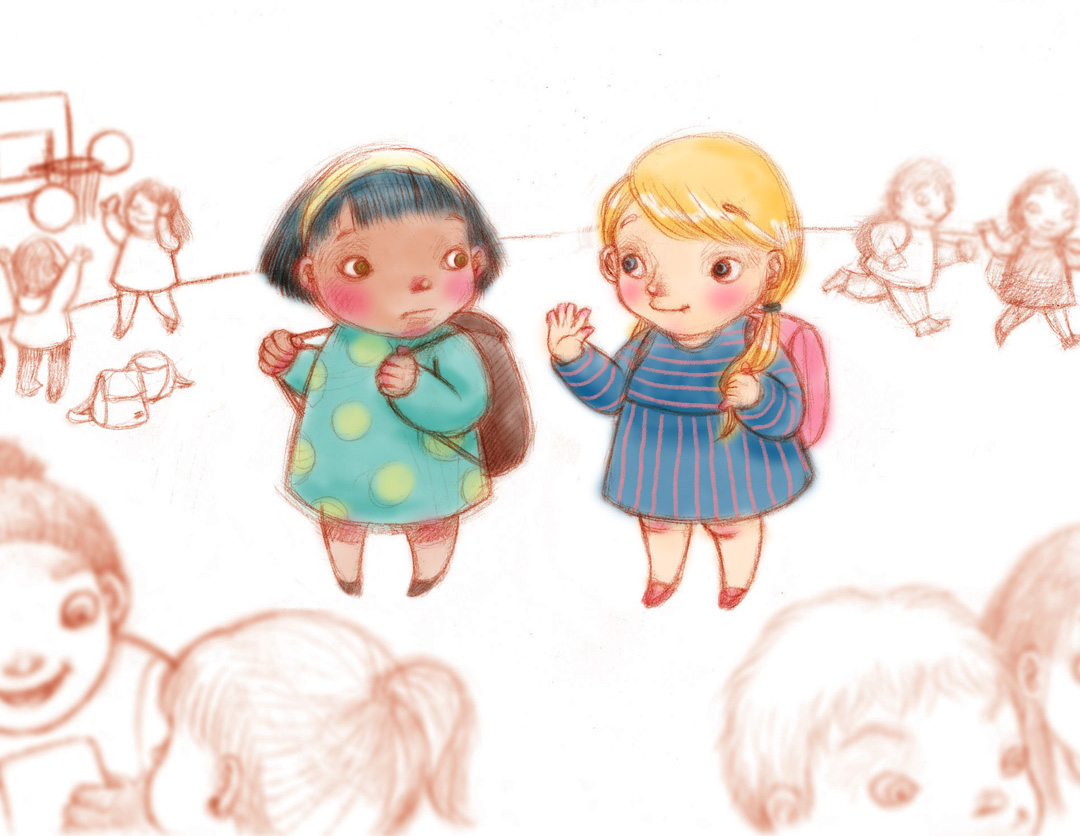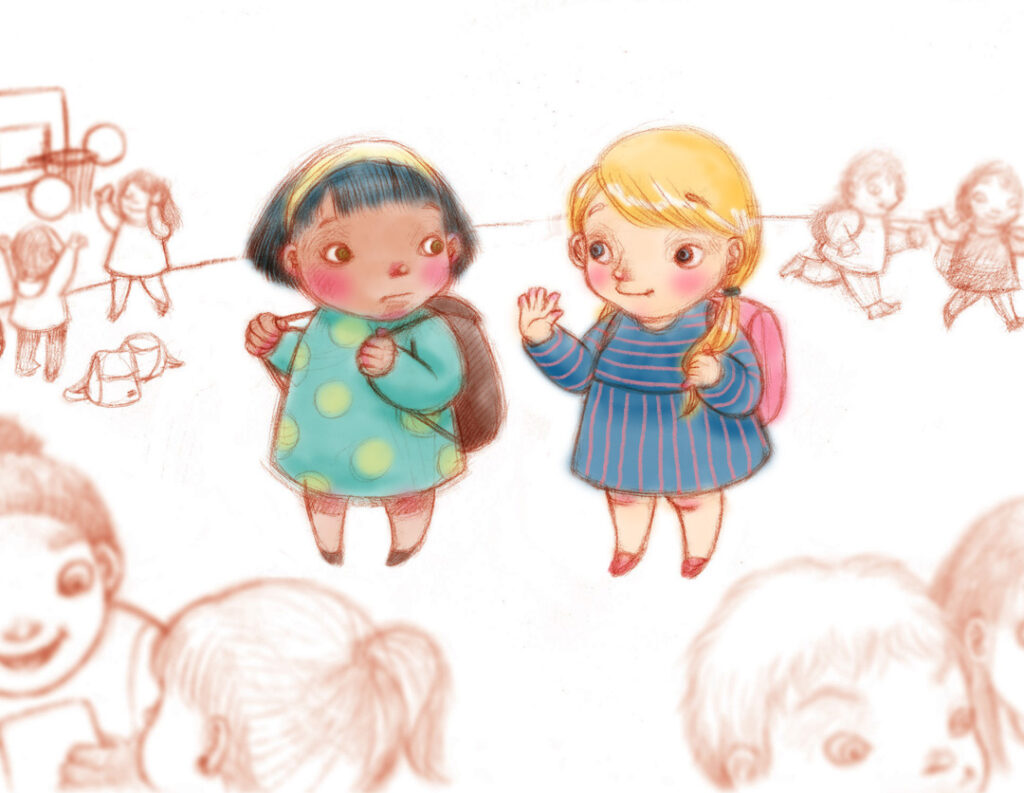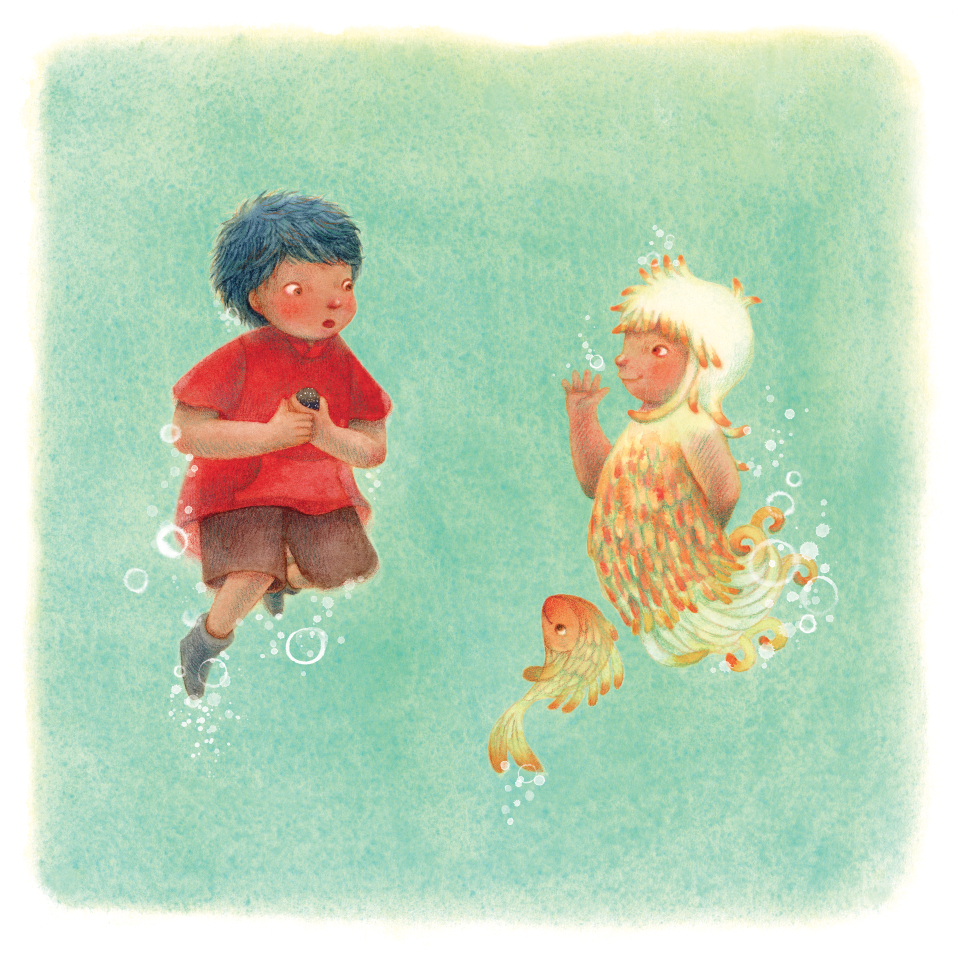
March 15, 2024
The Story Behind the Story
I was seven when our family moved to France. I started 3rd grade at an international elementary school. On my first day, I was standing alone on the playground at a loss for what to do or say (it was pretty clear nobody around me spoke Japanese) when I noticed another girl looking equally lost. Our eyes met and she smiled, helping me work up the courage to throw her a timid wave of my hand.
To little Saki’s relief, she waved back! I felt saved. We became fast friends and an entirely new (English-speaking) world opened up to me, thanks to her kind gesture. Some of the pages from my forthcoming children’s picture book, BETWEEN WORDS, are directly inspired by this moment:

An illustrated memory of a potential new friend wordlessly waving at little Saki.

A page from BETWEEN WORDS where a potential new friend wordlessly waves at Kai.
I wanted to share this because I believe so many kids (and grownups) experience relatable moments and can feel lost when it comes to forging connections that help them feel like they belong. A huge thank you goes to one of my brilliant editors and magician extraordinaire, Kait Lee Feldmann, who helped me unearth this memory. When I realized this was the emotional heart of the book, all the other plot points finally fell into place. (More on this story excavation process to come.)
There’s a section of the book I made wordless (another breakthrough Kait helped me get to) because I wanted to literally illustrate how these nonverbal moments of connection can happen, based on my own experiences as a perennial “foreigner.”
They include:
Humor: When we share funny moments, we connect. Whether we do this through physical or visual jokes (e.g., sticking a bunch of snails on your face like Kai does below, based on a memory from a 4th grade school trip which I won’t get into) or by inviting others to join a goofy dance party (I still do this often), laughter can be a boundary-defying language.
Play: Playing is another universal communication tool, especially for kids. The great news is many games around the world share fundamental principles—tag, hide and seek (like Kai and friend are playing here), and hopscotch (or “ken-ken-pa” as it’s called in Japan and “bebeleche” in Mexico)—and don’t require verbal communication.
Sharing interests → finding common ground → collaborating: I can attest to how each leads to the next, and ends up fostering lifelong friendships. As a kid I did this by using my superpower to draw all sorts of things: portraits of my classmates, holiday cards, circus scenes, mazes, you name it. It often elicited delight and curiosity in my peers that kept them coming back for drawing sessions, as customers (lil Sak was raking it in, charging 5 francs a drawing) and eventually, play dates!
A wordless underwater page showing Kai and friend playing, from BETWEEN WORDS.
My very first review by Kirkus so beautifully captured the essence of BETWEEN WORDS, calling it “a pitch-perfect tale for shy friend-makers everywhere.” Maybe it’s because you (or kiddos in your life) are shy, or because of a language barrier, or something else entirely that makes you feel different— whatever the reason behind your struggle to connect with the world around you, I hope this book becomes a little wave “hello” and a big hug reassuring you that you’re not alone.
This post is dedicated to a new friend, Rachel Michelle Wilson, a vibrant and magical soul whose generosity in sharing her own struggles with making friends has helped me feel deeply seen and embraced.